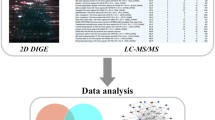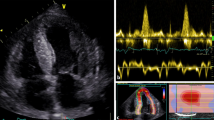Abstract
Immunoglobulin light chain (LC) amyloidosis (AL) results from overproduction of circulating amyloidogenic LC proteins and subsequent amyloid fibril deposition in organs. Mortality in AL amyloidosis patients is highly associated with a rapidly progressive AL cardiomyopathy, marked by profound impairment of diastolic and systolic cardiac function and significant early mortality. While myocardial fibril deposition contributes to the severe diastolic dysfunction seen in AL cardiomyopathy patients, the degree of fibril deposition has not been found to correlate with prognosis. Previously, we and others showed a direct cardiotoxic effect of amyloidogenic LC proteins (AL-LC), which may contribute to the pathophysiology and mortality observed in AL cardiomyopathy patients. However, the mechanisms underlying AL-LC related cardiotoxicity remain unknown. Mammalian stanniocalcin1 (STC1) is associated with a number of cellular processes including oxidative stress and cell death. Herein, we find that STC1 expression is elevated in cardiac tissue from AL cardiomyopathy patients, and is induced in isolated cardiomyocytes in response to AL-LC, but not non-amyloidogenic LC. STC1 overexpression in vitro recapitulates the pathophysiology of AL-LC mediated cardiotoxicity, with increased ROS production, contractile dysfunction and cell death. Overexpression of STC1 in vivo results in significant cardiac dysfunction and cell death. Genetic silencing of STC1 prevents AL-LC induced cardiotoxicity in cardiomyocytes and protects against AL-LC induced cell death and early mortality in zebrafish. The cardiotoxic effects of STC1 appears to be mediated via mitochondrial dysfunction as indicated by loss of mitochondrial membrane potential, ROS production and increased mitochondrial calcium levels. Collectively, this work identifies STC1 as a critical determinant of AL-LC cardiotoxicity.







Similar content being viewed by others
References
Block GJ, Ohkouchi S, Fung F, Frenkel J, Gregory C, Pochampally R, Dimattia G, Sullivan DE, Prockop DJ (2009) Multipotent stromal cells are activated to reduce apoptosis in part by upregulation and secretion of stanniocalcin-1. Stem Cells 27:670–681. doi:10.1002/stem.20080742
Brenner DA, Jain M, Pimentel DR, Wang B, Connors LH, Skinner M, Apstein CS, Liao R (2004) Human amyloidogenic light chains directly impair cardiomyocyte function through an increase in cellular oxidant stress. Circ Res 94:1008–1010. doi:10.1161/01.RES.0000126569.75419.74
Chang AC, Cha J, Koentgen F, Reddel RR (2005) The murine stanniocalcin 1 gene is not essential for growth and development. Mol Cell Biol 25:10604–10610. doi:10.1128/MCB.25.23.10604-10610.2005
Chang AC, Jellinek DA, Reddel RR (2003) Mammalian stanniocalcins and cancer. Endocr Relat Cancer 10:359–373. doi:10.1677/erc.0.0100359
Connors LH, Jiang Y, Budnik M, Theberge R, Prokaeva T, Bodi KL, Seldin DC, Costello CE, Skinner M (2007) Heterogeneity in primary structure, post-translational modifications, and germline gene usage of nine full-length amyloidogenic kappa1 immunoglobulin light chains. Biochemistry 46:14259–14271. doi:10.1021/bi7013773
Du J, Wang Y, Hunter R, Wei Y, Blumenthal R, Falke C, Khairova R, Zhou R, Yuan P, Machado-Vieira R, McEwen BS, Manji HK (2009) Dynamic regulation of mitochondrial function by glucocorticoids. Proc Natl Acad Sci USA 106:3543–3548. doi:10.1073/pnas.0812671106
Dubrey SW, Cha K, Anderson J, Chamarthi B, Reisinger J, Skinner M, Falk RH (1998) The clinical features of immunoglobulin light-chain (AL) amyloidosis with heart involvement. QJM 91:141–157. doi:10.1093/qjmed/91.2.141
Dubrey SW, Cha K, Skinner M, LaValley M, Falk RH (1997) Familial and primary (AL) cardiac amyloidosis: echocardiographically similar diseases with distinctly different clinical outcomes. Heart 78:74–82. doi:10.1136/hrt.78.1.74
Ellard JP, McCudden CR, Tanega C, James KA, Ratkovic S, Staples JF, Wagner GF (2007) The respiratory effects of stanniocalcin-1 (STC-1) on intact mitochondria and cells: STC-1 uncouples oxidative phosphorylation and its actions are modulated by nucleotide triphosphates. Mol Cell Endocrinol 264:90–101. doi:10.1016/j.mce.2006.10.008
Falk RH (2011) Cardiac amyloidosis: a treatable disease, often overlooked. Circulation 124:1079–1085. doi:10.1161/CIRCULATIONAHA.110.010447
Falk RH (2005) Diagnosis and management of the cardiac amyloidoses. Circulation 112:2047–2060. doi:10.1161/CIRCULATIONAHA.104.489187
Filvaroff EH, Guillet S, Zlot C, Bao M, Ingle G, Steinmetz H, Hoeffel J, Bunting S, Ross J, Carano RA, Powell-Braxton L, Wagner GF, Eckert R, Gerritsen ME, French DM (2002) Stanniocalcin 1 alters muscle and bone structure and function in transgenic mice. Endocrinology 143:3681–3690. doi:10.1210/en.2001-211424
Fisch S, Gray S, Heymans S, Haldar SM, Wang B, Pfister O, Cui L, Kumar A, Lin Z, Sen-Banerjee S, Das H, Petersen CA, Mende U, Burleigh BA, Zhu Y, Pinto YM, Liao R, Jain MK (2007) Kruppel-like factor 15 is a regulator of cardiomyocyte hypertrophy. Proc Natl Acad Sci USA 104:7074–7079. doi:10.1073/pnas.0701981104
Guan J, Mishra S, Falk RH, Liao R (2012) Current perspectives on cardiac amyloidosis. Am J Physiol Heart Circ Physiol 302:H544–H552. doi:10.1152/ajpheart.00815.2011
Ishibashi K, Imai M (2002) Prospect of a stanniocalcin endocrine/paracrine system in mammals. Am J Physiol Renal Physiol 282:F367–F375. doi:10.1152/ajprenal.00364.2000
Jain M, Brenner DA, Cui L, Lim CC, Wang B, Pimentel DR, Koh S, Sawyer DB, Leopold JA, Handy DE, Loscalzo J, Apstein CS, Liao R (2003) Glucose-6-phosphate dehydrogenase modulates cytosolic redox status and contractile phenotype in adult cardiomyocytes. Circ Res 93:e9–e16. doi:10.1161/01.RES.0000083489.83704.76
Kanellis J, Bick R, Garcia G, Truong L, Tsao CC, Etemadmoghadam D, Poindexter B, Feng L, Johnson RJ, Sheikh-Hamad D (2004) Stanniocalcin-1, an inhibitor of macrophage chemotaxis and chemokinesis. Am J Physiol Renal Physiol 286:F356–F362. doi:10.1152/ajprenal.00138.2003
Koizumi K, Hoshiai M, Ishida H, Ohyama K, Sugiyama H, Naito A, Toda T, Nakazawa H, Nakazawa S (2007) Stanniocalcin 1 prevents cytosolic Ca2+ overload and cell hypercontracture in cardiomyocytes. Circ J 71:796–801. doi:10.1253/circj.71.796
Koyama J, Falk RH (2010) Prognostic significance of strain Doppler imaging in light-chain amyloidosis. JACC Cardiovasc Imaging 3:333–342. doi:10.1016/j.jcmg.2009.11.013
Lai KP, Law AY, Yeung HY, Lee LS, Wagner GF, Wong CK (2007) Induction of stanniocalcin-1 expression in apoptotic human nasopharyngeal cancer cells by p53. Biochem Biophys Res Commun 356:968–975. doi:10.1016/j.bbrc.2007.03.074
Law AY, Ching LY, Lai KP, Wong CK (2010) Identification and characterization of the hypoxia-responsive element in human stanniocalcin-1 gene. Mol Cell Endocrinol 314:118–127. doi:10.1016/j.mce.2009.07.007
Law AY, Lai KP, Lui WC, Wan HT, Wong CK (2008) Histone deacetylase inhibitor-induced cellular apoptosis involves stanniocalcin-1 activation. Exp Cell Res 314:2975–2984. doi:10.1016/j.yexcr.2008.07.002
Li K, Dong D, Yao L, Dai D, Gu X, Guo L (2008) Identification of STC1 as an beta-amyloid activated gene in human brain microvascular endothelial cells using cDNA microarray. Biochem Biophys Res Commun 376:399–403. doi:10.1016/j.bbrc.2008.08.158
Liao R, Jain M, Teller P, Connors LH, Ngoy S, Skinner M, Falk RH, Apstein CS (2001) Infusion of light chains from patients with cardiac amyloidosis causes diastolic dysfunction in isolated mouse hearts. Circulation 104:1594–1597
Merlini G, Bellotti V (2003) Molecular mechanisms of amyloidosis. N Engl J Med 349:583–596. doi:10.1056/NEJMra023144
Merlini G, Seldin DC, Gertz MA (2011) Amyloidosis: pathogenesis and new therapeutic options. J Clin Oncol 29:1924–1933. doi:10.1200/JCO.2010.32.2271
Migrino RQ, Hari P, Gutterman DD, Bright M, Truran S, Schlundt B, Phillips SA (2010) Systemic and microvascular oxidative stress induced by light chain amyloidosis. Int J Cardiol 145:67–68. doi:10.1016/j.ijcard.2009.04.044
Migrino RQ, Truran S, Gutterman DD, Franco DA, Bright M, Schlundt B, Timmons M, Motta A, Phillips SA, Hari P (2011) Human microvascular dysfunction and apoptotic injury induced by AL amyloidosis light chain proteins. Am J Physiol Heart Circ Physiol 301:H2305–H2312. doi:10.1152/ajpheart.00503.2011
Mishra S, Guan J, Plovie E, Seldin DC, Connors LH, Merlini G, Falk RH, Macrae CA, Liao R (2013) Human amyloidogenic light chain proteins result in cardiac dysfunction, cell death and early mortality in zebrafish. Am J Physiol Heart Circ Physiol 305:H95–H103. doi:10.1152/ajpheart.00186.2013
Nguyen A, Chang AC, Reddel RR (2009) Stanniocalcin-1 acts in a negative feedback loop in the prosurvival ERK1/2 signaling pathway during oxidative stress. Oncogene 28:1982–1992. doi:10.1038/onc.2009.65
Palladini G, Lavatelli F, Russo P, Perlini S, Perfetti V, Bosoni T, Obici L, Bradwell AR, D’Eril GM, Fogari R, Moratti R, Merlini G (2006) Circulating amyloidogenic free light chains and serum N-terminal natriuretic peptide type B decrease simultaneously in association with improvement of survival in AL. Blood 107:3854–3858. doi:10.1182/blood-2005-11-4385
Panakova D, Werdich AA, Macrae CA (2010) Wnt11 patterns a myocardial electrical gradient through regulation of the L-type Ca(2+) channel. Nature 466:874–878. doi:10.1038/nature09249
Sheikh-Hamad D, Bick R, Wu GY, Christensen BM, Razeghi P, Poindexter B, Taegtmeyer H, Wamsley A, Padda R, Entman M, Nielsen S, Youker K (2003) Stanniocalcin-1 is a naturally occurring L-channel inhibitor in cardiomyocytes: relevance to human heart failure. Am J Physiol Heart Circ Physiol 285:H442–H448. doi:10.1152/ajpheart.01071.2002
Shi J, Guan J, Jiang B, Brenner DA, Del Monte F, Ward JE, Connors LH, Sawyer DB, Semigran MJ, Macgillivray TE, Seldin DC, Falk R, Liao R (2010) Amyloidogenic light chains induce cardiomyocyte contractile dysfunction and apoptosis via a non-canonical p38alpha MAPK pathway. Proc Natl Acad Sci USA 107:4188–4193. doi:10.1073/pnas.0912263107
Shin JT, Pomerantsev EV, Mably JD, MacRae CA (2010) High-resolution cardiovascular function confirms functional orthology of myocardial contractility pathways in zebrafish. Physiol Genomics 42:300–309. doi:10.1152/physiolgenomics.00206.2009
Sikkink LA, Ramirez-Alvarado M (2010) Cytotoxicity of amyloidogenic immunoglobulin light chains in cell culture. Cell Death Dis 1:e98. doi:10.1038/cddis.2010.75
Varghese R, Gagliardi AD, Bialek PE, Yee SP, Wagner GF, Dimattia GE (2002) Overexpression of human stanniocalcin affects growth and reproduction in transgenic mice. Endocrinology 143:868–876. doi:10.1210/en.143.3.868
Wagner GF, Dimattia GE (2006) The stanniocalcin family of proteins. J Exp Zool A Comp Exp Biol 305:769–780. doi:10.1002/jez.a.313
Wang Y, Huang L, Abdelrahim M, Cai Q, Truong A, Bick R, Poindexter B, Sheikh-Hamad D (2009) Stanniocalcin-1 suppresses superoxide generation in macrophages through induction of mitochondrial UCP2. J Leukoc Biol 86:981–988. doi:10.1189/jlb.0708454
Westberg JA, Serlachius M, Lankila P, Penkowa M, Hidalgo J, Andersson LC (2007) Hypoxic preconditioning induces neuroprotective stanniocalcin-1 in brain via IL-6 signaling. Stroke 38:1025–1030. doi:10.1161/01.STR.0000258113.67252.fa
Westerfield M (2000) The zebrafish book. A guide for the laboratory use of zebrafish (Danio rerio). University of Oregon Press, Eugene
Wu S, Yoshiko Y, De Luca F (2006) Stanniocalcin 1 acts as a paracrine regulator of growth plate chondrogenesis. J Biol Chem 281:5120–5127. doi:10.1074/jbc.M506667200
Yankner BA, Lu T (2009) Amyloid beta-protein toxicity and the pathogenesis of Alzheimer disease. J Biol Chem 284:4755–4759. doi:10.1074/jbc.R800018200
Yeung HY, Lai KP, Chan HY, Mak NK, Wagner GF, Wong CK (2005) Hypoxia-inducible factor-1-mediated activation of stanniocalcin-1 in human cancer cells. Endocrinology 146:4951–4960. doi:10.1210/en.2005-0365
Zhang K, Lindsberg PJ, Tatlisumak T, Kaste M, Olsen HS, Andersson LC (2000) Stanniocalcin: a molecular guard of neurons during cerebral ischemia. Proc Natl Acad Sci USA 97:3637–3642. doi:10.1073/pnas.070045897
Acknowledgments
The authors thank Ms. Wendy Du at Carnegie Mellon University, Mr. Soeun Ngoy at the Brigham and Women’s Hospital (BWH) Cardiovascular Physiology Core, Ms. Gloria Chan at Boston University (BU) Amyloidosis Center for excellent technical assistances and Drs. Yingyi Zhang, Judith Gwathmey and Thomas E. Macgillivray for providing critical reagents. This work was supported, in part, by the National Institutes of Health (NIH), HL088533, HL086967, HL093148, HL099073 (R.L.), DK90696 (D.C.S.), AG031804 (L.H.C.), American Heart Association (C.A.M.), and the Cardiac Amyloidosis Program, BWH (R.H.F., R.L.) and the Gruss and Wildflower Foundations and the Amyloid Research Fund at BU (L.H.C., D.C.S.). G.M. is supported by Associazione Italiana per la Ricercasul Cancro Special Program 5× mille, Molecular Clinical Oncology. S.M. is supported by NIH T32 (T32HL007604).
Conflict of interest
The authors declare that they have no conflict of interest.
Author information
Authors and Affiliations
Corresponding author
Electronic supplementary material
Below is the link to the electronic supplementary material.
Rights and permissions
About this article
Cite this article
Guan, J., Mishra, S., Shi, J. et al. Stanniocalcin1 is a key mediator of amyloidogenic light chain induced cardiotoxicity. Basic Res Cardiol 108, 378 (2013). https://doi.org/10.1007/s00395-013-0378-5
Received:
Revised:
Accepted:
Published:
DOI: https://doi.org/10.1007/s00395-013-0378-5




